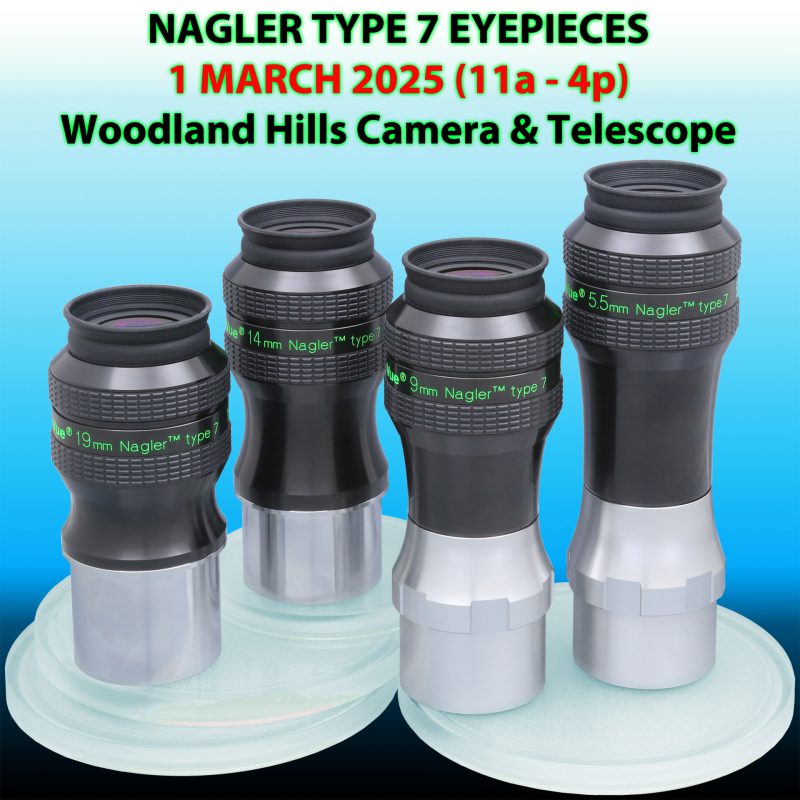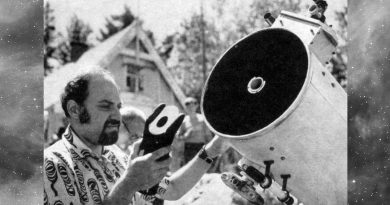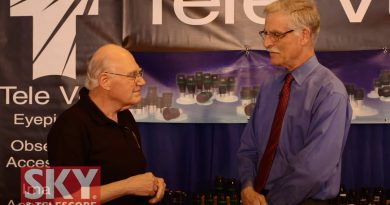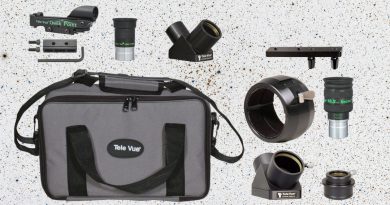PUNCH LAUNCH THIS WEEKEND!
[PUNCH / SPHEREx launched has been pushed back. Please follow this ink to NASA+ streaming for the most up-to-date coverage start time.]
On Sunday, March 2, 2025, the night sky will light up over California’s south central coast with the launch of a Falcon 9 rocket from Vandenburg Space Force Base. Along with a small near-infrared observatory named SPHEREx, the NASA payload will include the PUNCH mission that contains three Tele Vue Optical Lens Assemblies. Tele Vue was gratified to be chosen for the project by the lead scientist as he and several others at Southwest Research Institute (SwRI) are big fans of Tele Vue eyepieces and telescopes!

PUNCH is the Polarimeter to UNify the Corona and Heliosphere and consists of four small satellites (45 kg /100 lbs each) that will be released in a 600km high, 90 minute, polar, Sun synchronous orbit above the day/night terminator of Earth. Once in space, the satellites will slowly precess as Earth orbits the Sun to allow their instruments to continually face the Sun. Three of the suitcase sized satellites contain a Tele Vue designed and manufactured objective lens for the Wide Field Imager (WFI) cameras. The lens covers a 53° field of view across a 34.9mm diagonal and is specially designed both optically and mechanically to meet NASA’s launch and space ratings. The cameras will work together to capture images of the solar wind from 1.5° (6 R☉) to 45° (180 R☉) from the Sun. This “wind” causes the beautiful northern lights, but also threatens our power grids, satellites, and astronauts. The fourth satellite contains the Narrow Field Imager (NFI) — a coronagraph that work at f/4. It views the solar corona and area immediately around the Sun. The fields of view of the three WFIs overlap slightly with each other and with the NFI for continuous coverage of the entire inner solar system. This is a first for a solar observing mission.
With PUNCH, we will better understand the Sun, the solar wind, and their effects on humanity. The two major science objectives are:
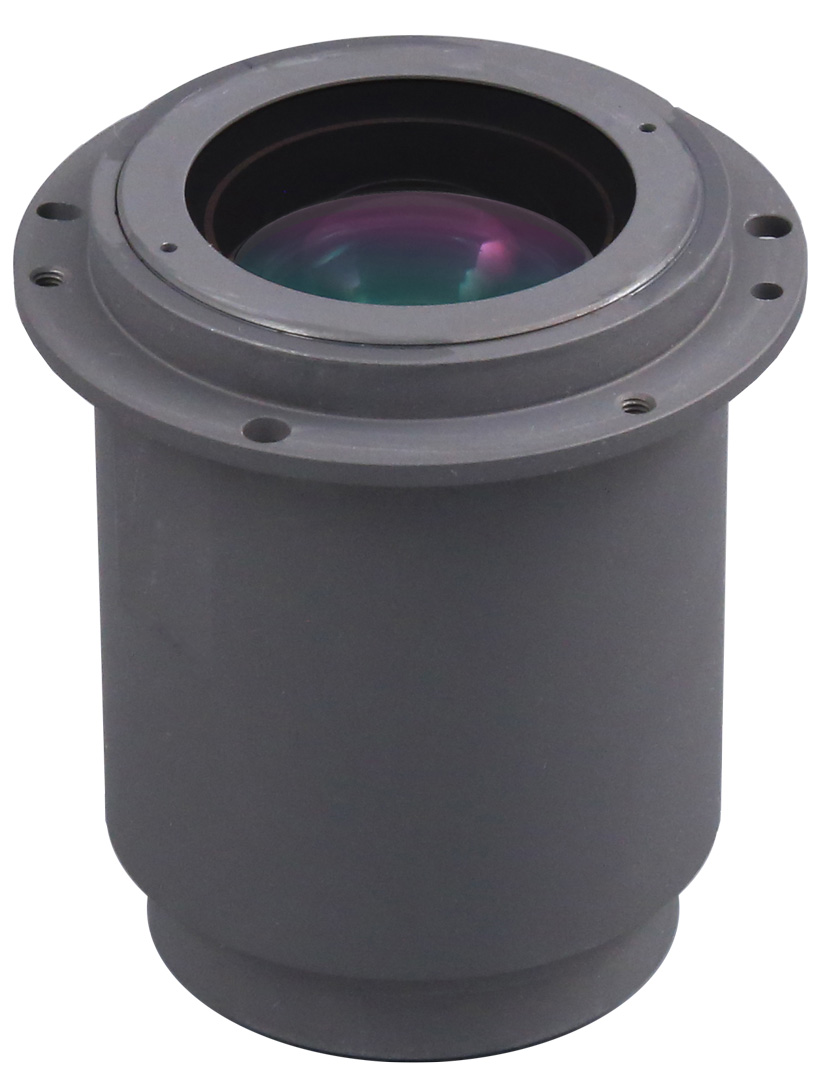
- Understand how coronal structures become the ambient solar wind. Surprisingly little is known about the young solar wind just as it is released from the corona. PUNCH answers three fundamental questions: How does the young solar wind flow and evolve? Where and how does the wind become turbulent? What are the physical properties of the mysterious zone where the outer corona separates to become the ambient wind?
- Understand transient structures in the young solar wind. The solar wind is not steady: it is punctuated by large “coronal mass ejections” (CMEs), shocks, and other transient effects. PUNCH images these large structures in 3D as they move and change across the inner solar system: CMEs, to help predict space weather; “corotating interaction regions” where solar wind streams interact with each other; and interplanetary shocks that can accelerate showers of high energy particles.
The WFI cameras each have an 8 GB CCD sensor that will take images of the Sun every 48 seconds through various polarizing filters. The time between images is used to spin a filter wheel and allow the wheel vibrations to settle down. An expected 1.41GBytes of compressed data a day will be created and stored on board each satellite. Every few days, the collected data will be transmitted to the ground via X-band downlink operating at 28.57 Mbit/s with implemented forward error correction. Computers will flag items of interest that appear in the images (including comets).
Designed as a 2-year mission, it could be extended to 5-years. After that time, the onboard CCD cameras would be sufficiently “chewed up” by charged particles as not to lend themselves for further usage. The PUNCH orbits will decay and enter the Earth’s atmosphere about 25 years after launch. Find out more about NASA’s PUNCH on the mission page at SwRI.
Launch and Viewing Info
WHAT: Launch of PUNCH with SPHEREx
WHERE: Vandenburg Space Force Base’s Space Launch Complex 4 East
TIME: Sunday, Mar. 2nd at 7:09PM PST / 10:09PM EST (3:09 UT Monday, Mar. 3rd)
ORBIT: Polar, Low Earth Orbit
LANDING: Booster will return to launch site.
LAUNCH VIEWING: The Falcon 9 will launch toward the south. The rocket plume is often visible across Southern California including Los Angeles.
STREAMING COVERAGE
● NASA+ streaming service begins an hour before launch: https://plus.nasa.gov/scheduled-video/spherex-and-punch-launch/
● NASA YouTube: https://www.youtube.com/watch?v=qkTcmQJdGKg
● SpaceX on X.com: https://x.com/SpaceX
● Spaceflight Now: https://www.youtube.com/@SpaceflightNowVideo/streams
Will you be posting on social media about your visit to Woodland Hills? We’ll like your social media post on that if you tag it #televue and #whcameratelescopes
televue #whcameratelescopes
Do you want your Tele Vue images re-posted on Tele Vue Optics’ Social Media accounts? Use this hashtag for consideration:
#RPTVO



